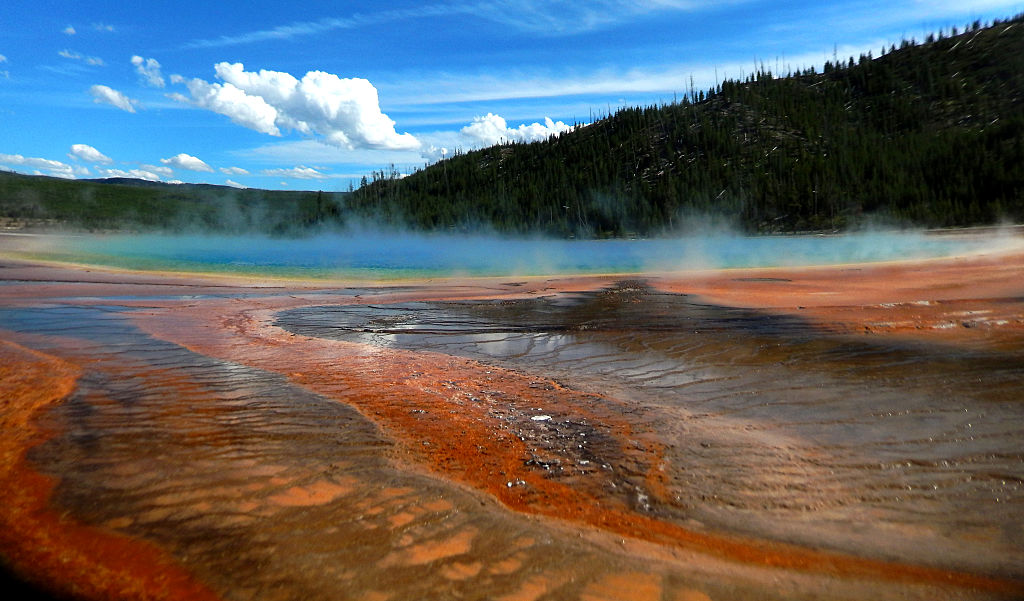How this one cataclysmic event would end US military dominance forever

YELLOWSTONE NATIONAL PARK, WY – July, 22: The Grand Prismatic hot spring is among the national parks myriad hydrothermal features created by the Yellowstone supervolcano. Photographed on July 22, 2014 in Yellowstone National Park, WY. (Photo by Jonathan Newton / The Washington Post via Getty Images)
SUMMARY
Yellowstone National Park was the first national park in America and maybe even the world. Visiting the massive protected area, it’s easy to see why. It’s more than 3,400 square miles of pristine natural beauty, consisting of geysers, mountains, and waterfalls. It’s also home to the largest supervolcano in North America, one that could change the world’s balance of power as we know it.
Since the end of World War II, the United States has been a military and economic superpower, able to project real power anywhere in the world. The backbone of that dominance is not only the U.S. military, it’s also the natural geography of the country itself.
Bordered on the east and west by massive oceans, with vast plains, deserts, and mountain ranges in between, the continental United States would be a formidable opponent for any invader… or actually, all invaders. Some experts believe that a coalition of all the rest of the world, including American allies, still couldn’t successfully invade against U.S. military resistance.
If something were to neutralize the United States’ ability to sustain itself, such as a global ice age brought on by the eruption of the Yellowstone supervolcano, America’s perceived invulnerability might be forever changed.
According to the Natural History Museum in London, Yellowstone’s volcano has the capacity to produce a magnitude eight eruption on the Volcanic Explosivity Index, which would spew 1,000 cubic kilometers of ash, rock and whatever else was around the volcano into the air and around the world.
Lava flows would affect the surrounding states while molten rock would cause the nearby ground to collapse. The aforementioned ash cloud would block out the sun. Gasses released into the atmosphere would change the chemical composition of the atmosphere, causing a global cooling that would devastate agricultural production. Ashfall would reach Texas in the south, the Mississippi River in the east, and California to the west.
The potential global effects of such an eruption would be catastrophically worse the closer one got to the volcano’s ground zero. That means the United States would soon be fighting for its survival, not only in military terms but fighting to feed its population. The U.S. military would spend most of its time in relief efforts for the near future. The United States would certainly become vulnerable to attack but foreign military efforts would most likely be supporting the relief.
America’s nuclear triad would be affected first. Land-based missile silos would be affected by up to six inches of ashfall. Submarine-based missiles and strategic bombers (if they could fly in the ash at all) would be less affected in the short term. Even conventional forces might be unaffected initially, but the U.S. economy would shrink dramatically, making the country’s current military budget unsustainable.
Though eruptions in the supervolcano are unpredictable, the last time it erupted was around 70,000 years ago. The volcano is stable, even as far as volcanoes are concerned, and the odds of an eruption in our lifetimes are one in 730,000. Scientists also have ways of predicting when such an eruption might occur, including measuring the amount of molten rock underneath the mountain.
So for the foreseeable future, it looks like the only groundbreaking part of Yellowstone is the Kevin Costner series on Paramount+.
SHARE
